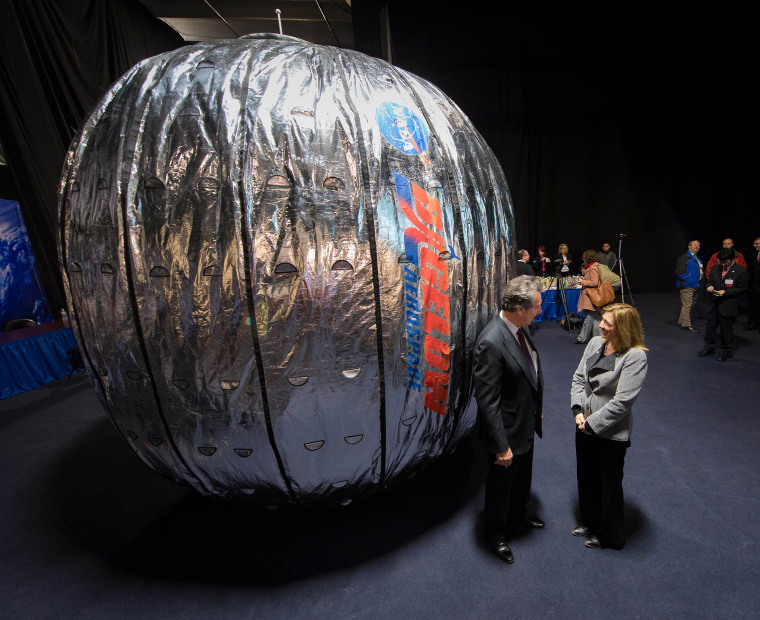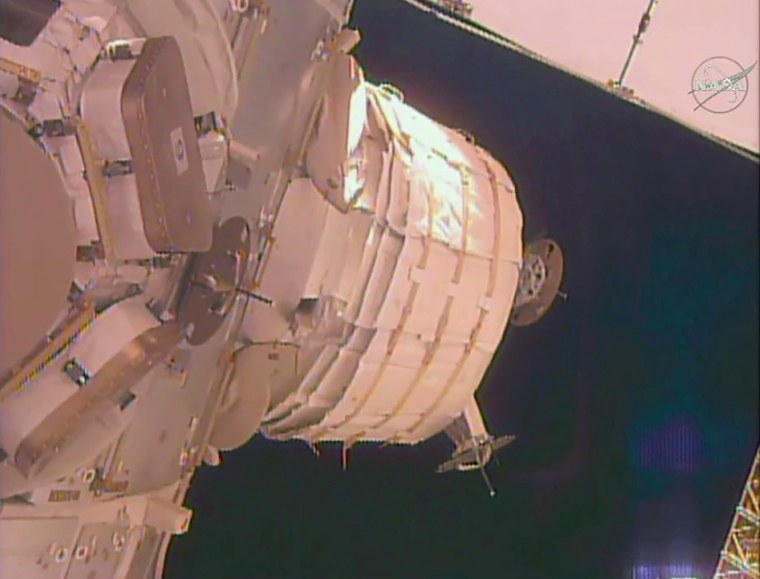NASA called off attempts to inflate the first privately built expandable room on the International Space Station on Thursday after early efforts to pump up the module didn't go as planned.
The inflatable room, called the Bigelow Expandable Activity Module, is an experimental habitat built by the company Bigelow Aerospace. NASA wants to study the technology for future deep-space habitats, while Bigelow Aerospace has its sights set on private space stations and moon bases. But when NASA astronaut Jeff Williams began the inflation process for BEAM on the ISS early this morning, the module did not expand as expected, forcing flight controllers to call off the attempt for today. You can see video of the BEAM module inflation attempt here, courtesy of NASA.
"NASA is working closely with Bigelow Aerospace to understand why its module did not fully expand today as planned," NASA officials wrote in a statement, adding that engineers at the agency's Johnson Space Center in Houston (home to ISS Mission Control) are discussing the next steps for BEAM. "They are evaluating data from the expansion that has occurred thus far. If the data supports a resumption of operations, another attempt to complete the module's expansion could come as early tomorrow."
During today's inflation attempts, Williams manually let air inside the BEAM module via a small valve in one- to four-second intervals. At first, the module appeared to expand about five inches, but then stalled. Mission Control opted to stand down for the day to analyze the situation, and Williams said he'd be ready for the next try.
Read More: Bigelow Aerospace Shows Off Its Vision for Expandable Space Stations
"This are the kinds of things [where] the team is up for the challenge," Williams radioed down to Mission Control. "It's space business."
When packed, the BEAM module is a compressed cylinder just over seven feet long and nearly eight feet wide. But once fully inflated, BEAM will be over 13 feet long and 10.5 feet wide, essentially a new room with 565 cubic feet of space. NASA and Bigelow Aerospace plan to study the inflated BEAM module over the next two years to gauge its effectiveness as a space habitat.

BEAM launched to the space station on a SpaceX Dragon cargo ship on April 8 and arrived two days later. On April 16, the uninflated module was installed on the space station's Tranquility node.
The Las Vegas-based Bigelow Aerospace is no stranger to expandable habitats. The company has launched two unmanned, inflatable habitat prototypes (called Genesis I and Genesis II) into orbit, in 2006 and 2007, respectively.
Bigelow Aerospace is also developing a larger space habitat, called the B330, which is designed to offer astronauts a whopping 11,650 cubic feet of space and serve as the foundation for a commercial space station or manned base on the moon or Mars.
This story originally appeared on Space.com. Read the full story here. Email Tariq Malik at tmalik@space.com or follow him @tariqjmalik and Google+. Follow us @Spacedotcom, Facebook and Google+.
